Thank you to cthrash for the extended help and talking with me in chat. Using his post along with a little troubleshooting I have figured out what works for me. The code is super clunky but it was just to test and make sure I'm able to do this. To answer the question:
Nuget packages and classes
Using cthrash's post I was able to get both the training and prediction nuget packages installed, which are the correct packages for this particular application. I needed the following classes:
Microsoft.Azure.CognitiveServices.Vision.CustomVision.Prediction
Microsoft.Azure.CognitiveServices.Vision.CustomVision.Prediction.Models
Microsoft.Azure.CognitiveServices.Vision.CustomVision.Training
Microsoft.Azure.CognitiveServices.Vision.CustomVision.Training.Models
Endpoint Root
Following some of the steps Here I determined that the endpoint URL's only need to be the root, not the full URL provided in the Custom Vision Portal. For instance,
https://southcentralus.api.cognitive.microsoft.com/customvision/v2.0/Prediction/
Was changed to
https://southcentralus.api.cognitive.microsoft.com
I used both the key and endpoint from the Custom Vision Portal and making that change I was able to use both a training and prediction client to pull the projects and iterations.
Getting Project Id
In order to use CustomVisionPredictionClient.PredictImageAsync you need a Guid for the project id and an iteration id if a default iteration is not set in the portal.
I tested two ways to get the project id,
Using project id string from portal
- Grab the project id string from the portal under the project settings.
- For the first argument to
PredictImageAsync pass
Guid.Parse(projectId)
Using the training client
- Create a new
CustomVisionTrainingClient
To get a list of <Project> use
TrainingClient.GetProjects().ToList()
In my case I only had a single project so I would just need the first element.
Guid projectId = projects[0].Id
Getting Iteration Id
To get the iteration id of a project you need the CustomVisionTrainingClient.
- Create the client
- To get a list of
<Iteration> use
client.GetIterations(projectId).ToList()
- In my case I had only a single iteration so I just need the first element.
Guid iterationId = iterations[0].Id
I am now able to use my model to classify images. In the code below, fileStream is the image stream passed to the model.
public async Task<string> Predict(Stream fileStream)
{
string projectId = "";
//string trainingEndpoint = "https://southcentralus.api.cognitive.microsoft.com/customvision/v2.2/Training/";
string trainingEndpoint = "https://southcentralus.api.cognitive.microsoft.com/";
string trainingKey = "";
//string predictionEndpoint = "https://southcentralus.api.cognitive.microsoft.com/customvision/v2.0/Prediction/";
string predictionEndpoint = "https://southcentralus.api.cognitive.microsoft.com";
string predictionKey = "";
CustomVisionTrainingClient trainingClient = new CustomVisionTrainingClient
{
ApiKey = trainingKey,
Endpoint = trainingEndpoint
};
List<Project> projects = new List<Project>();
try
{
projects = trainingClient.GetProjects().ToList();
}
catch(Exception ex)
{
Debug.WriteLine("Unable to get projects:\n\n" + ex.Message);
return "Unable to obtain projects.";
}
Guid ProjectId = Guid.Empty;
if(projects.Count > 0)
{
ProjectId = projects[0].Id;
}
if (ProjectId == Guid.Empty)
{
Debug.WriteLine("Unable to obtain project ID");
return "Unable to obtain project id.";
}
List<Iteration> iterations = new List<Iteration>();
try
{
iterations = trainingClient.GetIterations(ProjectId).ToList();
}
catch(Exception ex)
{
Debug.WriteLine("Unable to obtain iterations.");
return "Unable to obtain iterations.";
}
foreach(Iteration itr in iterations)
{
Debug.WriteLine(itr.Name + "\t" + itr.Id + "\n");
}
Guid iteration = Guid.Empty;
if(iterations.Count > 0)
{
iteration = iterations[0].Id;
}
if(iteration == Guid.Empty)
{
Debug.WriteLine("Unable to obtain project iteration.");
return "Unable to obtain project iteration";
}
CustomVisionPredictionClient predictionClient = new CustomVisionPredictionClient
{
ApiKey = predictionKey,
Endpoint = predictionEndpoint
};
var result = await predictionClient.PredictImageAsync(Guid.Parse(projectId), fileStream, iteration);
string resultStr = string.Empty;
foreach(PredictionModel pred in result.Predictions)
{
if(pred.Probability >= 0.85)
resultStr += pred.TagName + " ";
}
return resultStr;
}




